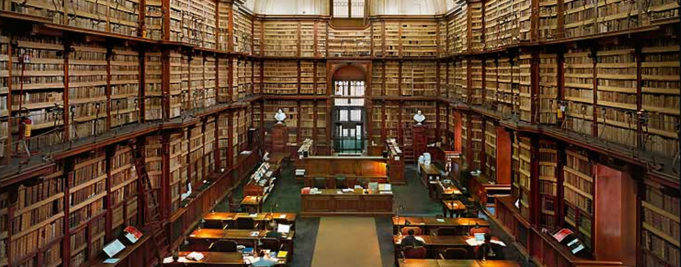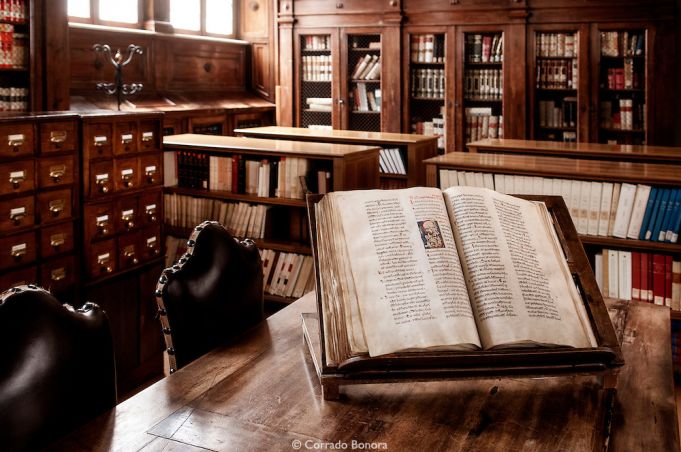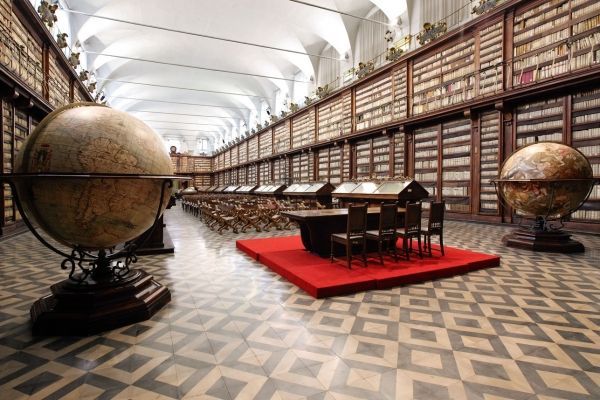Exploring Rome's secret libraries: Angelica, Casanatense and Valicelliana
The city of Rome is a book of stone, monuments and ancient artefacts which make up and pass on the intriguing and complex chapters of an endless chronology.A thousand-year history to browse with the many vectors of mnemonic restoration. But its museums, which along with the ancient monuments are probably the most visited tourist locations, are not the sole custodians of the heritage of a civilisation.
Libraries, too, in the silence and splendour of their spaces hidden from outside view, preserve the history of peoples. These temples of knowledge and institutions with centuries of history should therefore not be ignored in any guide dedicated to the city of Rome, the cradle not only of art but also of that erudite culture born in the humanistic atmosphere which, together with the invention of printing in the 15th century, led to the birth of a vigorous tradition of libraries and the founding of fascinating places dedicated to reading and the conservation of knowledge.
Originally, libraries were simply collections rather than institutions dedicated to the education of the masses, and were also conceived as pure museums where books would be displayed together with ancient objects. In the late 16th century there was a division of the two spheres, and the patrimony of the libraries took on an identity of its own. In this way, during the Renaissance, the dream ideal of the Royal Library of Alexandria was united with a new public and universal mission for the institution.
The Angelica Library

The books and the readings became important instruments for the salvation of the human soul, and libraries rapidly became a powerful means of education and redemption. The public nature of the Angelica library is immediately clear from the dedication at the door, inviting “all those who would care to enter”. Everyone has an equal right to intellectual progress, and everyone is addressed in this new concept of the library as a cultural arbitrator for the masses.
Also read: Caravaggio in Rome
Despite its historical importance and precocious public role, and despite its location along the traditional tourist itineraries, it is often ignored by uninterested passers-by. To see this splendid example of 16th century libraries, one needs only to pause in Piazza Sant’Agostino, perhaps after admiring Caravaggio’s Madonna dei Pellegrini, and enter at door No. 8 into the sanctity of the vision of a rich preserved patrimony of printed texts, many of them dedicated to S. Augustine and his Order, arranged on antique wooden shelves.
Also read: 29 Things to do in Rome
A collection which has been enlarged over the centuries by important bequests, and which owes its fascinating name to its founder, showing that libraries in those days were in some way also the biographies of interesting men of the times.
Location: Piazza di S. Agostino, 8
The Valcelliana Library

His Congregation of the Oratory, whose rules decreed that meals be accompanied by readings from religious texts, commissioned the creation of a suitable space to contain a library enjoying constant growth.
The genius Francesco Borromini directed the work from 1637 to 1652, although his plan was partly modified by Camillo Arcucci when completing the arrangement of the library in 1667.
Also read: Bernini guide in Rome
In Piazza della Chiesa Nuova 8, on the second floor of the Oratory next to the church of Santa Maria in Vallicella, this library, open to the public, preserves the memory not only of 17th-century architecture but also of the culture of the period between the Reformation and the Counter-Reformation, safeguarding in its splendid setting some 130,000 books, as well as manuscripts and antique etchings.
Location: Via della Chiesa Nuova, 18
Casatenense

In Via S. Ignazio 52, in the convent of the S. Maria sopra Minerva church at a stone’s throw from the Pantheon, Cardinal Girolamo Casanate left his precious collection of theology, law and Roman history to the Domenican fathers in 1701 to found this library as a place of “public benefit”.
Also read: Visiting the Vatican Museums: All You Need to Know
In part of the basilica’s cloister, an area which has always been dedicated to isolation and study by the devout, the architect Antonio Maria Bodioni built a section destined to hold the 400,000 volumes, 6,000 manuscripts and 2,200 incunabola bequeathed by the cardinal to the library bearing his name.
Also read: Must see Churches in Rome
Libraries are thus not merely dusty places of study but also the expression, perhaps among the least contaminated, of the social and cultural history of the city.
This brief itinerary among important historical libraries in the centre of Rome may be seen as an invitation to visit and examine a paper legacy which opens the doors to a collective memory made of histories and of the numberless experiences which give a name, a voice and a sense to the external fascination of the eternal city.
Location: Via di S. Ignazio, 52
by Arianna Farina
Main ph: gabriele gelsi / Shutterstock.com



















